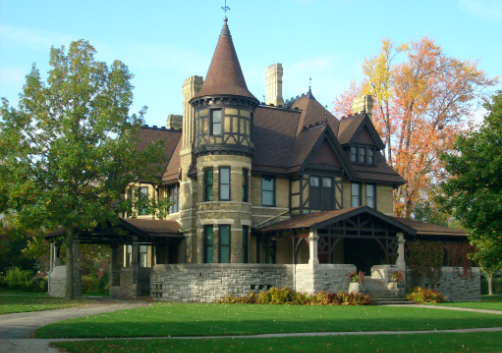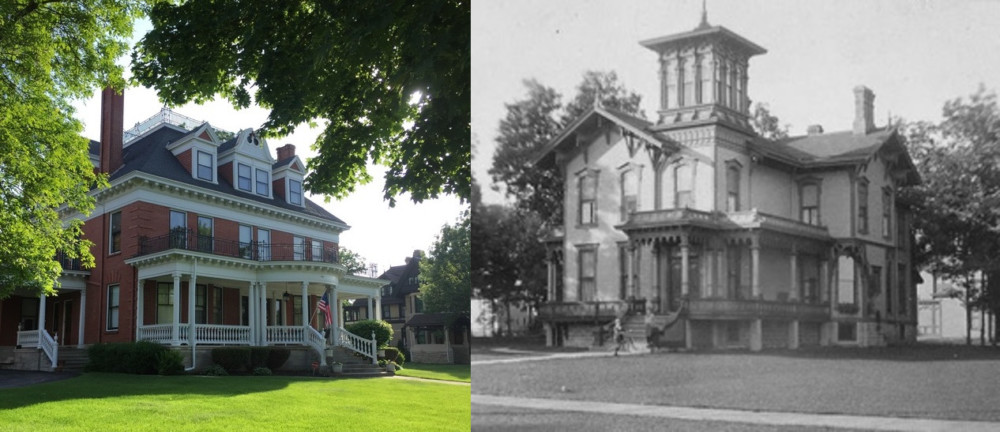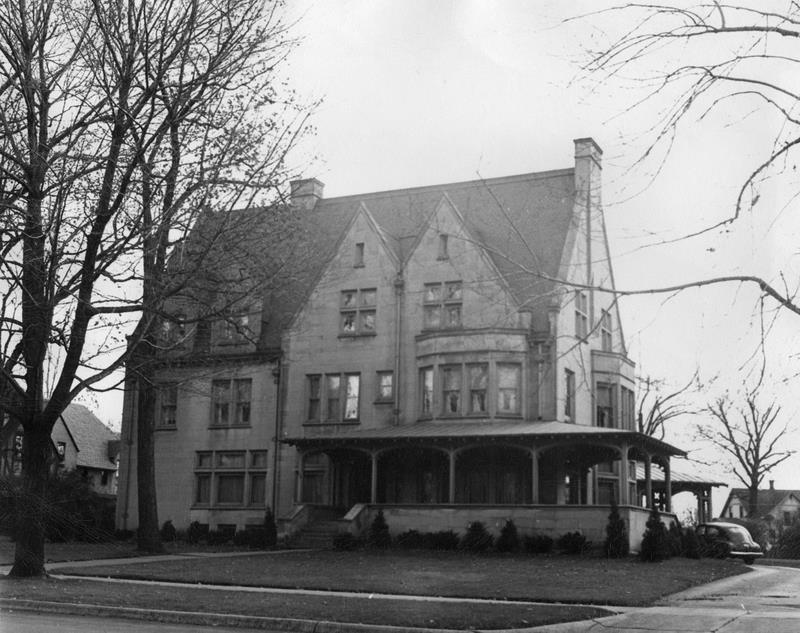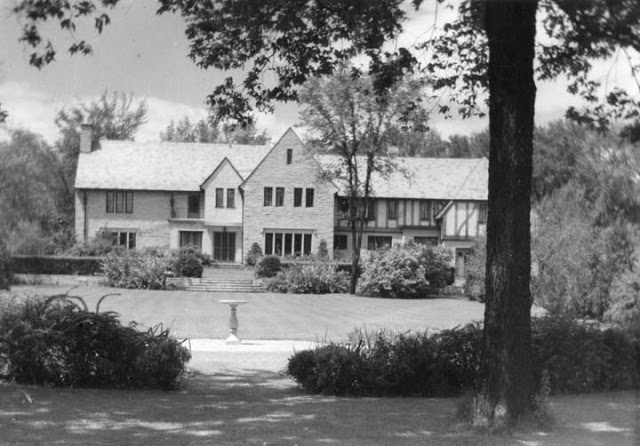A History in the Making: The homes of Neenah’s Wisconsin Avenue
Throughout the past few weeks, we have all experienced mixed emotions towards our homes. Whether we are comforted by, confined in, or conflicted about our present home isolation, we all no doubt have a strong appreciation for the ability to call those walls home.
However, many may feel like the realm of possibility has been dulled by the enclosure of those four walls. But, if we take a step back – making sure not to run into the couch – our footprint lingers in our home, and our home leaves an even larger imprint in our community.
Centuries before us, lives bursting at the seams with potential and possibility walked the same streets we so desperately wish to walk again and laid their own foundation in our very Fox Cities.
Their foundations, both literal and symbolic, don’t remain unknown, collecting dust in city records. These foundations stand as markers, relics of the past, and the historical homes of East Wisconsin Avenue in Neenah act as their perfect example.
These homes, nestled along the lake and shrouded by lush green trees, are a symbol to all who pass by of the founders who allowed Neenah and many thriving industries to take root in our community. Whether in paper, health care, or unique glass oddities, these homes represent the people who brought new opportunities and prosperity to the Fox Valley.

Photo and information from Neenah Historical Society’s project “If These Walls Could Talk” in collaboration with Neenah High School students.
When gazing at these homes from a distance, a tower emerges from the trees, belonging to none other than the Havilah Babcock House. The tower beacons viewers to look further and to explore the house that played a part in the creation of Kimberly Clark and Company.
Though the home has ties to the paper industry now, Havilah Babcock first impacted Neenah through his successful Dry Goods store, now Associated Bank, and Wisconsin’s second-largest flour mill center with his partner, John Kimberly.

After the two became prominent members of society, they teamed up with Charles Clark and Franklyn Shattuck to create Neenah’s prestigious paper success: Kimberly Clark & Co. This company would make lasting impacts in the Fox Cities and beyond.
Though a successful businessman, Babcock still cherished his Dry Goods store and remained dedicated to it until Kimberly Clark became his sole focus due to its massive accomplishments. With a dedication to high-quality products from both his store and company, Babcock took his successes and talents and placed them into the building of his home in 1881.
Architect William Waters, an esteemed name in Fox Cities history, was hired to design the noteworthy home, and construction lasted until 1883. Because of Babcock’s desire for high quality, the home’s Queen Anne style was preserved and stands as a staple example of late 19th-century architecture – a twist of French residing in the tower.
Babcock took his family’s experiences and his own and placed them as stories throughout the home’s stained glass, where both their memories and an example of 19th-century style remain today as the house is still in the family.

After 1893 on left and before 1893 on right. Photo and information from NHS project
Right next door to this masterpiece lies the contrasting build of Franklyn C. Shattuck’s home. With its rich red brick and elegant iron railings, this home starkly contrasts the shocking design of the Babcock house as a Georgian Revival-style home.
Though the colonial home stands as a relic of the 20th century, a home designed by the familiar William Waters stood in its place before 1893, featuring a similar massive tower. However, Shattuck’s more English taste led him to hire Ferry and Clas of Milwaukee to design the home. This style brought colonial influence into Neenah and it stands as a focal point of our community’s history to this day with its ballroom and gold-leafed ceilings.
Shattuck’s home acts as a reminder of his legacy as one of the four founders of Kimberly Clark & Co., along with Babcock. His son went on to found Shattuck Middle School, and the home provides a glimpse into the past that intricately shaped our present.

Photo from NHS project
The house of the third of the four founding men of Kimberly Clark & Co. stands proud and erect next door. Towering over the street in all of its glory, the Charles Benjamin Clark home features a mix of Tudor and colonial style, having been built in 1882. In 1996, an addition was added on to the side of the home, precisely fitting the intricate architecture of the original.
The sturdy stone walls were home to names we all find familiar. Though Kimberly Clark & Co. stood as his most recognizable accomplishment, Charles Clark was also the mayor, member of the city council, and a member of the state assembly.
Though the home notably represents Charles Clark, it also holds significance due to his daughter who inherited the home, Theda Clark. The name is no coincidence; after giving birth in the home, Theda passed away due to a delay in medical care because of the distance of a hospital. Using the money left in her will, her husband donated time and effort into bringing a hospital closer to home, thus giving birth to Theda Clark Medical Center.
These influential lives gave way for the prosperous city of Neenah to thrive and advance. Though their homes remained residential, their valiant structures reveal the lives within. Each stands proudly next to the other, symbolizing a small portion of the people that allowed for generational success to bloom for all of the Fox Cities.

Moving away from paper and down the street and taking a left, the grand home of John N. Bergstrom and his wife, Evangeline Bergstrom stands warmly, welcoming visitors from far and wide. Built later than many of the other homes, the Bergstrom’s built their Tudor mansion in 1929, during the largest economic crash in all of history. The two bravely continued to build their home and build up their paper company amidst the trying times.
However, as mentioned, we have moved away from the paper companies. This home signifies the beautiful dedication of Mrs. Evangeline Bergstrom to collecting and researching antique paperweights–so maybe we’re still talking about paper.

Growing up infatuated with the hidden wonders within these glass treasures, Evangeline dedicated years of studying and collecting to these paperweights. After gaining fame with her collections at Art institutes, on radio shows, and in prestigious magazines, Evangeline wrote a book detailing her vast knowledge, and it quickly gained national popularity. With demands to see her collection and to please her late husband, Evangeline transformed their Tudor mansion into a museum to display over 3,500 antique finds and allow her legacy to live on. The home, to this day, is known as the Bergstrom-Mahler Museum of Glass and welcomes all curious minds to take a gander at its hidden oddities.
Whether through strategic business decisions or self-impassioned acts, these influential members of society left behind lasting footprints in their homes and our community.
Though their homes undoubtedly stand as prominent markers of their success, it was the personal and brave decisions of those residing in the homes that made the difference.
For all of the homes of East Wisconsin Avenue, powerful and impassioned individuals stood behind their creation, allowing the passerby to glimpse at their achievements. Their decisions created international companies, places for exploration and connection, and an awfully breathtaking street that not only preserves family names, but encourages inspiring and educational walks.
All of the past population and all of us sitting within our four walls must understand that each choice we make, whether to pursue a passion or embark on a business deal, will affect our future, our descendants’ future, and the future of the foundation around us. Our homes merely play the role of spokesperson, alerting those who pass about the notable acts of those within.
During this time of isolation and self-reflection, take time to appreciate the importance of your dedication to your garden, mastery of a certain skill, or raising a family within those walls. Somehow, each small act will hold lofty significance in the coming years.
The next time you pass by the glittering shores of Lake Winnebago, lined with picturesque homes of the past–standing valiantly and proud–take a moment to recognize their efforts, reflecting on your own personal steps whose footprints are and will be scattered far and wide across the Fox Cities and beyond.










Leave a Reply Jenny Koltnow Cancel reply